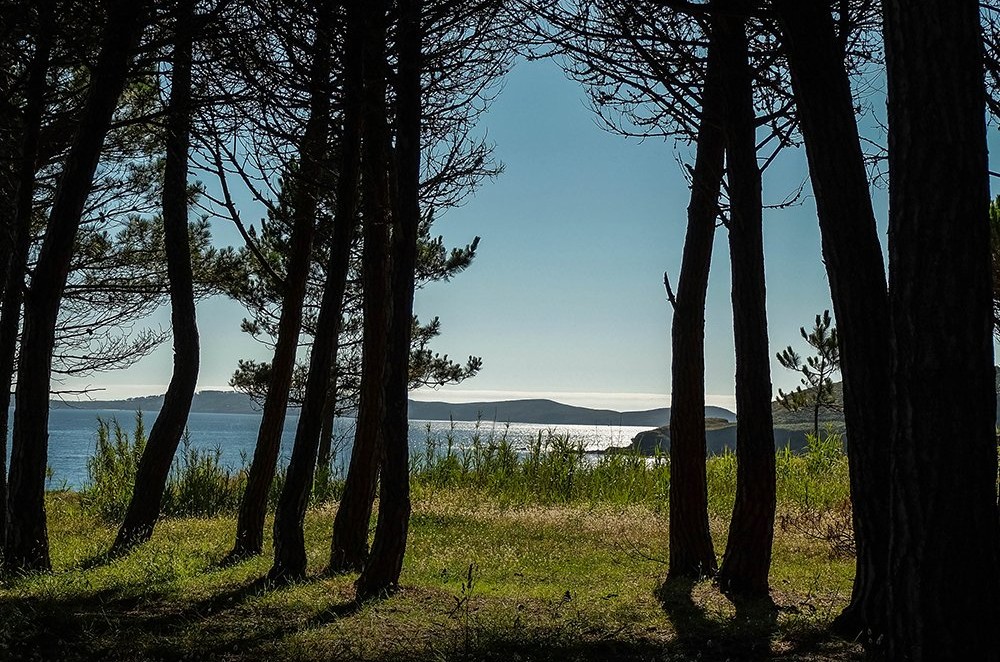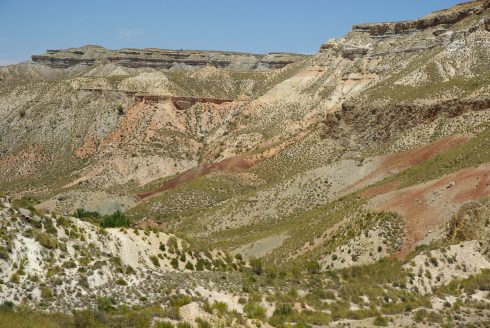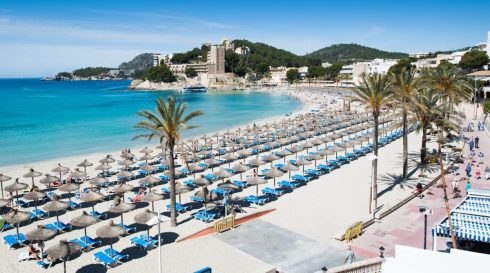Galicia is an autonomous community in the northwestern corner of Spain with its own culture, language and tradition.
It has so much to offer: unforgettable sites, relaxing beaches and mouthwatering cuisine, and for those sweltering in the heat elsewhere in central and southern Spain, cooler climes!
So, here are 10 reasons why you should put Galicia on your bucket list of destinations in Spain, with a few recommendations to really get the most out of your time there.
1) Santiago de Compostela
![Santiago De Compostela (unsplash)[1]](https://theolivepress.es/wp-content/uploads/2021/07/Santiago_de_Compostela_Unsplash1-scaled.jpg)
The ancient city of Santiago de Compostela is a stunning destination, visited by hundreds of thousands of tourists every year, many of them pilgrims who have walked the camino know in English as the Way of St. James.
Since the 9th Century pilgrims have journeyed from all over Europe to visit the breathtaking Cathedral of Santiago de Compostela, the reputed burial place of St. James the Apostle.
Though the city is more than its stunning romanesque Cathedral, the capital of Galicia’s entire Old Town area has been designated as a UNESCO World Heritage Site.
There are a host of small squares, chapels and museums dotted around the town. And on the main plaza is one of the most beautiful hotels in all of Europe, the jewel in the crown of the state run parador chain.
The Hostal dos Reis Católicos is the oldest continuously running hotel in the world. It was built by the Catholic Monarchs: Ferdinand and Isabel in 1482, 10 years before Colombus journeyed to the New World. The luxurious 5-star hotel offers a decadent option for tourists who want to see Galicia in the utmost comfort.
2) Xacobeo 2021-22
![Catedral Santiago De Composetla (unsplash)[1]](https://theolivepress.es/wp-content/uploads/2021/07/Catedral_Santiago_de_Composetla_Unsplash1-scaled.jpg)
2021 is a very special year for pilgrims on the Camino de Santiago (the Way of St. James) as it is a Xacobeo year (Jacobean year).
This special year only happens when the festival of James the Apostle (July 25) lands on a Sunday. This once every five to 11 years, the next being in 2027.
But what is so special about this year? Well, during this year the Holy Door of the Cathedral of Santiago de Compostela is opened to allow pilgrims through. Indeed, during this year ‘a full plenary indulgence’ (forgiveness of all sins) is granted upon praying in the Cathedral.
And this year, the Pope took the unprecedent step of officially extending the festival year to last throughout 2022, due to COVID.
Though the festival is more than a religious opportunity. Santiago de Compostela will be even more alive with life and activity.
There will be a variety of opportunities to meet new people, learn new things and of course enjoy the festivities, as people have done every Xacobeo since it was created in 1126 by Pope Calixtus II. So now is the perfect time to see Santiago as it is brimming with life.
3) Cuisine
![Polbo A Feira Spain.info[1]](https://theolivepress.es/wp-content/uploads/2021/07/Polbo_a_Feira_-_spain.info1_.jpg)
No mention of Galciia would be complete without paying homage to its incredible gastronomy. It is famous for its delightful seafood: dishes such as Polbo á Feira (Market style Octopus) and the Empanada Gallega (Galician Empanada) are unforgettable.
Seafood is abundant, fresh and affordable.
Polbo á Feira is a typical Galician dish served with wine which captures the delicacy of the seafood while bringing in the sweet and spiciness of the paprika seasoning. The perfectly boiled octopus (done to a melt in the mouth texture) paired with traditional local bread is not to be missed.
The Empanada Gallega is a representation of the heritage of Galicia. The fusion between the local fresh fish, meats and vegetables combined with the Goan spice mixes brought to Galicia by Portuguese traders in the 16th century provide a dazzling combination of flavours.
But also look out for the famous pimientos to padron – small green peppers – and the delicious Galego dessert, Tarta de Santiago. A light fluffy almond sponge.
4) Wine
![Galicia Grapes (unsplash)[1]](https://theolivepress.es/wp-content/uploads/2021/07/Galicia_Grapes_unsplash1-scaled.jpg)
Galician wine has been on the up during the recent decades and is now recognised as the home of Albariño white wine, the Rías Baixas region in particular.
A source in the wine industry (with a WSET Level 2 qualification) gave the Olive Press some insight into the Galician wines.
He said that Albariño white wines from the Rías Baixas region are “refreshing with great notes of citrus fruits balanced with salty and flinty mineral qualities.”
He also said that “Albariño wines are perfect for a day in the sunshine. They are clean and refreshing”.
He recommended the Albariño Martín Códax 2019/20 Rías Baixas as a great choice for a hot summer’s day. It runs at around €15 and is widely available throughout Spain.
5) Tower of Hercules
![Tower Of Hercules (unsplash)[1]](https://theolivepress.es/wp-content/uploads/2021/07/Tower_of_Hercules_unsplash1-scaled.jpg)
The town of A Coruña is home to the oldest working lighthouse in the world. The Tower of Hercules, a UNESCO World Heritage Site sits on the coastline overlooking the wonderful A Corña, “the City of Glass”.
The town was founded by the Romans in around 100AD and the lighthouse was built along with the town. However, according to legend, Hercules built the lighthouse to commemorate his victory over the giant Geryon near the town. He named the settlement Crunia, after a woman he fell in love with from the area.
Today, A Coruña and the Tower of Hercules are picturesque pockets of Galicia that are definitely worth exploring to unpack the rich history and the stunning views of the region.
6) Beaches and Climate
![Praia A Lanzada (creative Commons)[1]](https://theolivepress.es/wp-content/uploads/2021/07/Praia_A_Lanzada_creative_commons1-scaled.jpg)
Galicia is home to a multitude of idyllic playas, with dramatic coves, white sand and clear waters, they rank among the best in Spain, although temperatures are decidedly cooler than in the Med.
The white sandy paradises of Praia das Catedrais with its enormous arches and Praia da Lanzada in A Coruña are some of Galicia’s most famous beaches.
These relaxing beaches combined with the very comfortable 25 degrees Celsius average temperature (July-September) in Galicia provide a lovely getaway from the oppressive heat further south.
7) Countryside
![Río Miño, Alejandro Pinero Amerio (unsplash)[1]](https://theolivepress.es/wp-content/uploads/2021/07/Rio_Mino_alejandro-pinero-amerio_unsplash1-scaled.jpg)
The temperate climate also facilitates perfect conditions for long hikes in the verdant countryside.
Most of the long hikes in Galicia all lead to Santiago, the Camino de Santiago and the Camino Inglés to name a couple.
But Galicia has more to offer: the Senda del Agua and the Sendero del Río Fraga are relaxing walks along the waterways and coasts of Galicia, allowing you to take a break from civilisation for a while, and enjoy tranquility for a time.
For those more daring however, the Ruto de O Alto Principe is a short ascent up Mount Agudo. Once at the top though, you are rewarded with an immaculate view of the entire archipelago of the Illas Cíes.
8) Illas Cíes
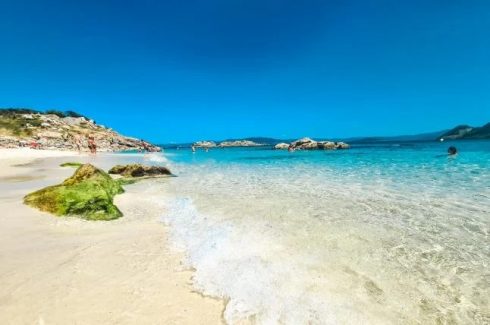
It is no exaggeration to say that the archipelago is the perfect camping destination. In fact, there are no formal hotels on the islands at all, only camp sites!
The old pirate haven is a snapshot of tranquility: there are no cars, no rubbish, no loud music, only nature and stunning vistas. The sandy beaches, mountain hikes, kayaking and snorkeling opportunities are all unrivaled in their beauty. And are definitely worth considering when deciding where to go in Galicia.
Though travellers must take book ahead as the islands only accept 2,200 visitors a day in order to preserve the pristine condition of the islands.
9) Festivals
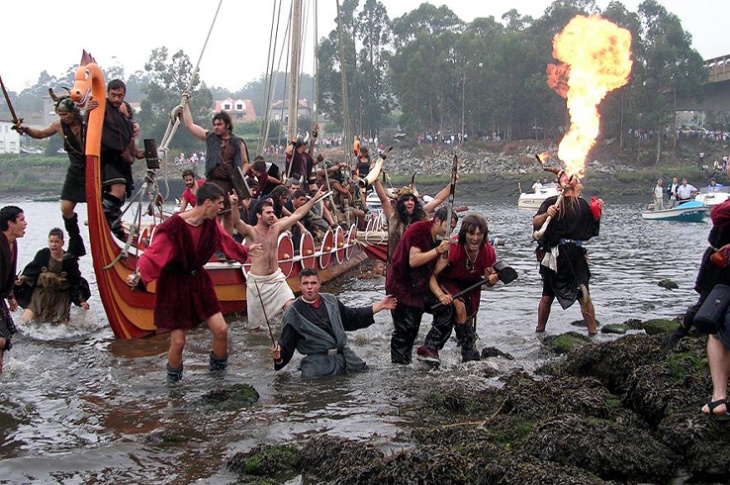
From peace and tranquility to excitement and fiestas Galicia offers it all. There is a rich history of parties and festivals in Galicia.
The first weekend of August will see a horde of marauding Vikings will land on the coast of Catoira, by the Torres del Oeste (an 11th Century ruined Castle) as part of the Catoira Viking Festival.
La Fiesta de Santiago Apóstol (The feast day of St. James) takes place on the week ending July 25 with huge firework displays, singing and dancing on the streets.
Other regional festivals include Fiesta del Marisco (The Seafood Festival) which takes place in October in O Grove. This is a celebration of all things seafood and Galician with over 200,000 annual visitors. This is a must for any food lovers.
10) Culture
![Gaitas (creative Commons)[1]](https://theolivepress.es/wp-content/uploads/2021/07/Gaitas_creative_commons1.jpg)
Finally, the last but by no means least reason to visit Galicia is to take in its wonderful culture.
From its stalwart defence against the Vikings, to its pride in their dialect Gallego, to its love of the bagpipes (the Gaita) Galicia has so much to offer for tourists keen to learn about the culture and history of the autonomous region.
So, please, go and learn about Galicia, enjoy the region. You won’t regret it.
READ ALSO:
- Why a village in Spain’s Galicia is about to be invaded by marauding vikings
- Government in Galicia fight for Franco’s family to hand over keys to 18th Century palace La Casa Cornide
- These are the most visited tourist attractions in Spain according to Google reviews

